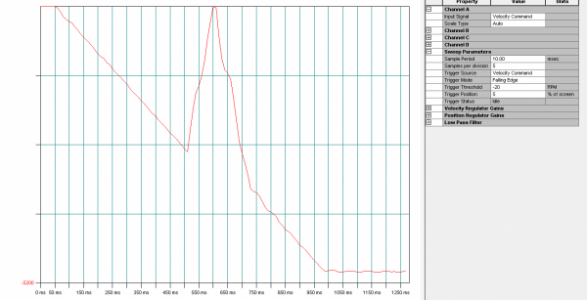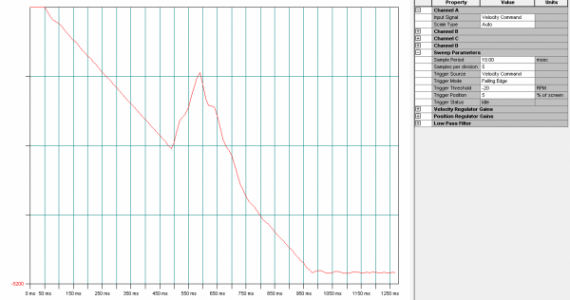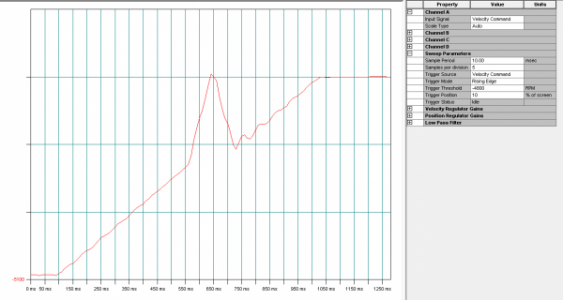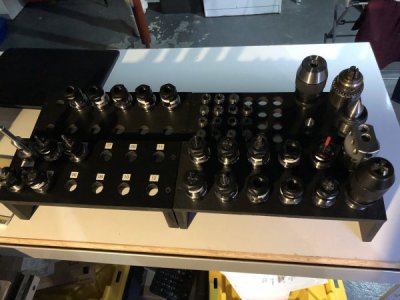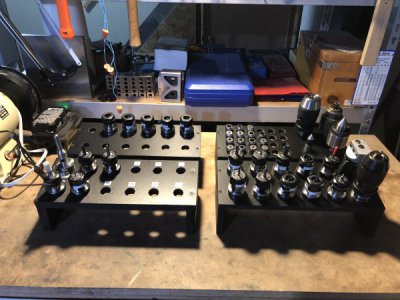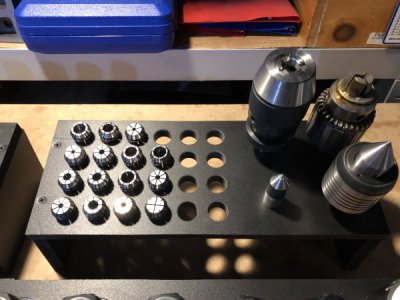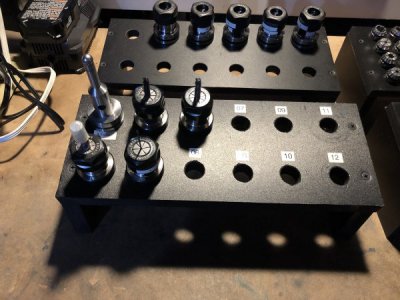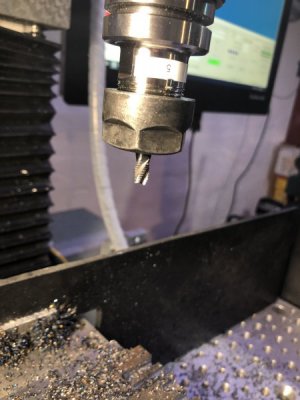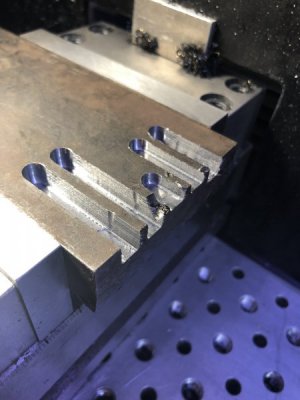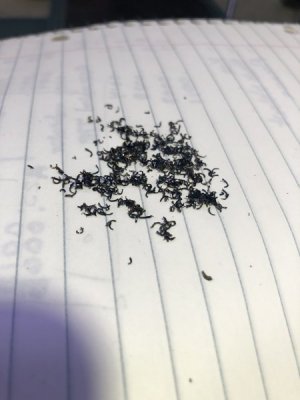OK, chucks made it in last week. I have mixed feelings about the quality of the product, but I don't regret buying them. Here is my best attempt at an unbiased review. I will make some comparisons between the Tormach TTS tools I have as well as my previously purchased non-ATC chucks.
Shipping and Packaging: Tools arrived within 3 week days from me placing my order via USPS. They were placed inside a double bagged padded Priority Mail envelopes. Each chuck was wrapped in a plastic bag with rust inhibitor and then inside a telescoping plastic tube that tools usually come in. I was a little concerned about damage due to the soft packaging, but there were no issues.
Appearance: The chucks have a nice general fit and finish. The black oxide is dark and even and the machined surfaces of the chuck body are nice. The shank, collar, and OD near the ATC groove of the tool is ground with a fine finish. My previous import chucks had a rough grind to the collar that hits the nose of the spindle, but these new chucks were as smooth as my Tormach tools. The body, threads, and taper of the tool appear to be hard turned. This made me nervous, but shouldn't immediately disqualify precision since hard turning can be as accurate as grinding if done right. The taper had microscopic machining chatter marks (the kind that looks like a mirror shine until you pull out a magnifying glass) but certainly not anything significant enough to cause issues. The taper is smoother than the ground taper on my other imports, but I don't have a Tormach ER chuck to compare against. The threads are burr free and have no chatter.
The collet nuts have a lower quality black oxide and the information is laser engraved on the face. The threads and taper are again hard turned and look quality. Two nuts had poor surface finish/scoring on the taper (likely from a broken tool during manufacturing) and were set aside to be discarded.
Hardness: I used a fine cut file on the back of the holder, near the taper, and on the nut. The file skated across the surface without really biting but did not feel glass hard. I would loosely guess a low to mid 50's Rockwell C scale. A single nut had 5 hardness test dimples present on the face. I did not receive a chuck which had witness marks from a hardness test.
Taper Runout: Chucks were tested by rotating the shank in a Vee Block with a .0005 dial test indicator mounted magnetically to the block. I would have liked to use a .0001 dial indicator, however I did not have a way to measure the taper with this. An extra vee block was used to weight the shank down into the Vee to prevent error due to uneven pressure during measurement. The face of the collar was firmly pressed against the side of the Vee block during the test. This is necessary to keep the indicator in the same location in the taper, however any error in the collar grind will falsely show up as runout in the taper (due to axial motion of the chuck). Chucks and nuts were serialized. Runout was measured at 3 locations within the taper and an average is reported below:
- Chuck 1: .0003” (.008mm) TIR
- Chuck 2: .0003” (.008mm) TIR
- Chuck 3: .0003” (.008mm) TIR
- Chuck 4: .0002” (.005mm) TIR
- Chuck 5: .0004” (.010mm) TIR
- Chuck 6: .0006” (.015mm) TIR
- Chuck 7: .0008” (.020mm) TIR
- Chuck 8: .0008” (.020mm) TIR
- Chuck 9: .0011” (.028mm) TIR
- Chuck 10: .0012” (.030mm) TIR
Assembled Runout: Chuck assemblies were tested using a Techinks 1/4" Precision (.0002" TIR) ER20 collet and a 1/4" carbide dowel seated to full depth in the collet and measured at 3xD (0.75") from the face of the chuck using a .0001" Dial Indicator. The two nuts which were improperly machined were not tested to prevent damage to the collet. Additionally, chucks 7-10 were not tested due to the excessive taper runout. Each chuck was tested with each nut to find combinations that minimized runout. Understand that at least .0002" (if not more) uncertainty in measurement is introduced by the collet, wear on the collet, and the carbide dowel. Chucks were tightly to roughly equal torques, but I do not use a torque wrench, so some uncertainty is introduced there.
Runout varied from .0003" to .0026" with an average assembled runout of .0013". This leads me to believe that either the threads on the collet chucks, or the nuts have machining errors which cause the taper in the nut to assemble off center of the taper in the chuck. I was able to match nuts to chucks 1-5 which gave the following runouts:
- Assembly 1: .0004"
- Assembly 2: .0003"
- Assembly 3: .0006"
- Assembly 4: .0004"
- Assembly 5: .0009"
Repeatability of these matched chuck assemblies unfortunately is not very good. For example, reassembling Assembly 1 yielded the following:
- Assembly 1 Test 1: .0004"
- Assembly 1 Test 2: .0012"
- Assembly 1 Test 3: .0016"
- Assembly 1 Test 4: .0006"
Customer Service: I contacted the seller of these chuck and stated that I had 5 units which did not meet their stated tolerance of 0.01 mm TIR. I explained my measurement method and the results I got. The seller was concerned that my methods may have introduced error in the measurements which was the source of the excessive TIR, but offered to send me 5 replacement chucks immediately. I have not yet received these in the mail, but I am very happy with this outcome.
Closing thoughts: All in all I am happy with the purchase of these collet chucks since my expectations were set reasonably. I have 5 chucks which I can (with a little trial and error) assemble within .0005" or so TIR. For me, having more TTS tools was more important than having 2-3 very precise chucks since I can create a library of pre-assembled tools that I can add to my CAM software. Since I won't need to take the chucks apart nearly as often to swap tools in and out, I can afford to take the time to assemble them for minimum TIR.
If you want less expensive TTS ER20 chucks ($20/ea vs $45/ea) and are willing to take the time to inspect the product and deal with some higher TIR chucks, then I would recommend this product.


